Hey folks!
Deadeye Dave here. It’s time for a rare personal update: I’ve reached something of a self-imposed milestone, and I feel like writing it down. Let’s talk about switches!
I’ve been dabbling in mechanical keyboards for 6 or 7 years now, and collecting switches seriously for around 3 or 4. Right around the time brightly-colored switches became commonplace, I started putting them in 12oz mason jars, and the collection really took off from there.
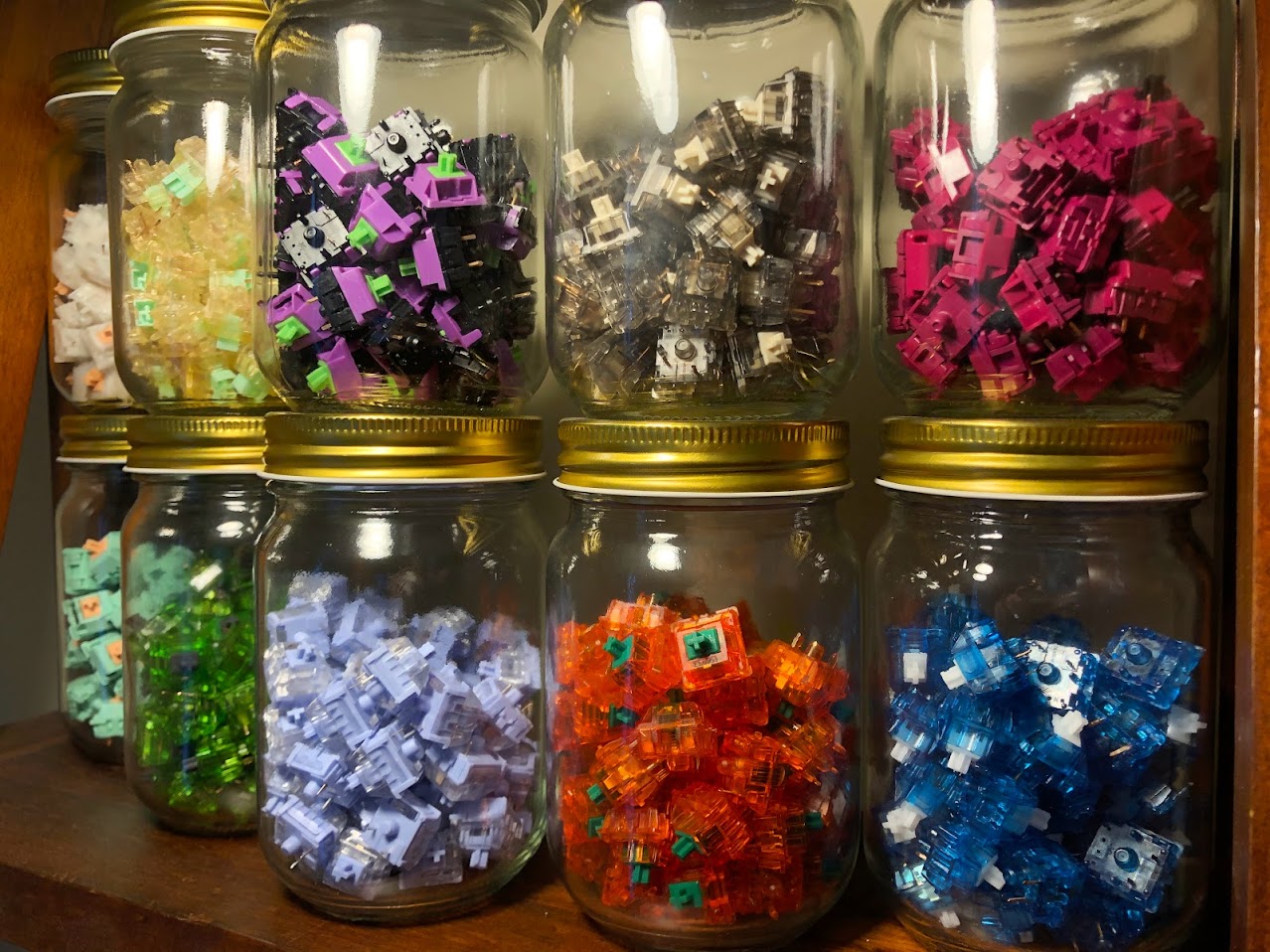
It begins… I blame those EV-01s – they look way too cool not to be looked-at. I’d originally picked them up for a commissioned build, but when the customer cancelled I stuck them on the shelf.
It was around this time I got my first hot-swap keyboard and realized how easy it would be to change the feel of my keyboard to suit my mood. New obsession, meet gas-pedal.
I first started with 61 switches per jar, as my switch testing platform at the time was a trusty GK-61x. Seems fairly quaint now with its stamped-sheet plate mounted in a cheap plastic tray – but that scuffed little keeb really was a catalyst in my obsession with switches.
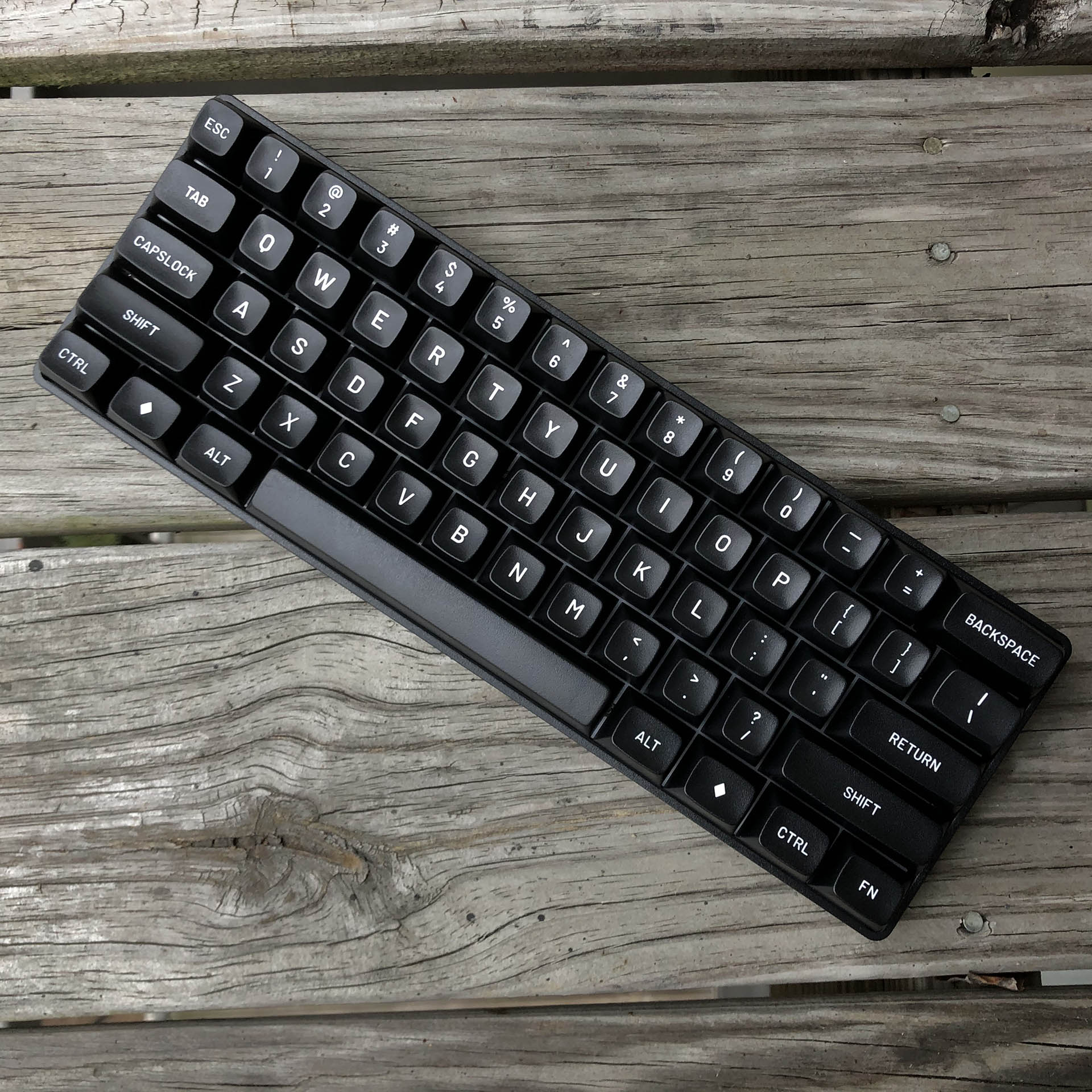
I put so many miles on this thing. Well – a board very similar to this one, anyway. My original GK-61x is now living in a BBOX 60 case; the one pictured above is actually a GK-61s with a custom prototype POM plate and a fresh set of MT3 WoB keycaps – still one of my favorite sets of all time.
Trivia: this version of the GK is out of production, and has a different case and plate than the ones currently available – given away by its more rounded corners and thinner walls when compared with the updated “x” and “xs” models. If you’re curious, “x” means it supports an optional split space bar, and “s” means it has bluetooth; the no-suffix and s-only models were discontinued; they’re now all either “x” or “xs” and feature thicker case walls with sharper corners.
The GK was my second hot-swap – but my first one that was actually easy to swap switches in and out of. I already had a Massdrop CTRL, but its tight-gripping anodized top plate wasn’t really conducive to indulging in switch ADD – the GK, though – that’s another story. Swapping switches in that was effortless – and so I did, often. This was about the point I really started to lean-into collecting switches consciously, and also started learning about some of the more nuanced aspects of them like travel distance, spring curve type, and potential keycap interference.
This was also about the time I specifically got into silent switches, having a desire to continue enjoying haptic bliss at work – and after Cherry’s offerings left me wanting, this had me poking around internet back-allies asking about a guy called “hbheroinbob”.
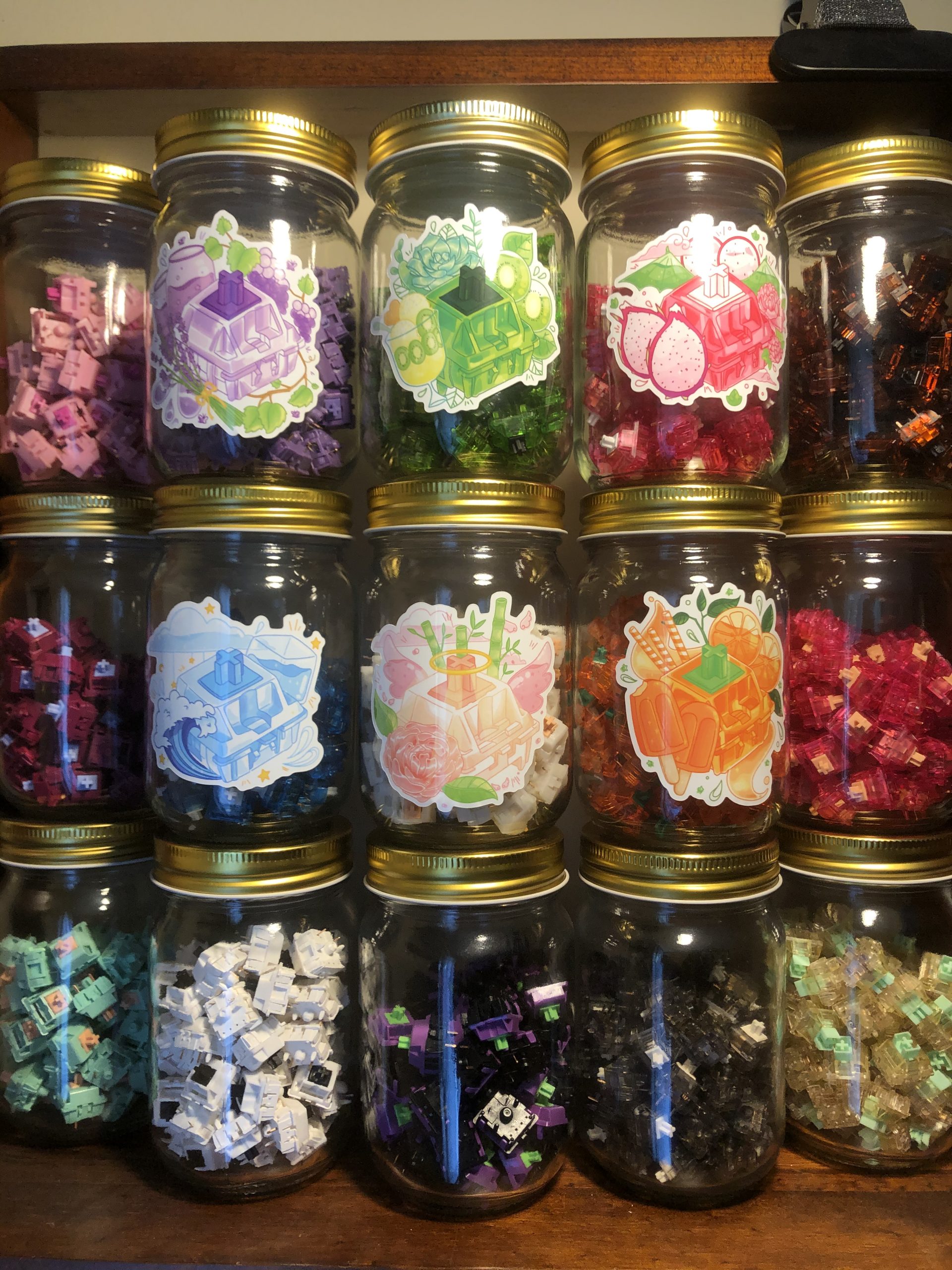
It grows – when SeoBun released her wonderful switch illustrations as a sticker set, I inadvertently stumbled into a new side-hobby: finding the perfect stickers for switch jars.
Heroin Bob? Yep – this isn’t SLC Punk! – I’m talking about Gazzew. While his taijitu-flavored Outemus are absolute staples of the enthusiast community these days, they weren’t always so easy to come by. When I got my first set of Gazzew components, he was A.) the only English-speaking vendor I knew of that sold parts piecemeal and B.) exclusively selling through reddit DMs.
I’m delighted to see his much-deserved ascent to switch-designing legend, but there was a certain exciting charm to having switches that could only be sourced by directly contacting a single individual. (TBH I think this initial aspect of intrigue only helped the rise of Gazzew – stumbling on his stuff through searching and ordering directly from “Heroin Bob” makes for a fun story, and it was shared a-plenty around the various forums. Hipster gold, as they say.)
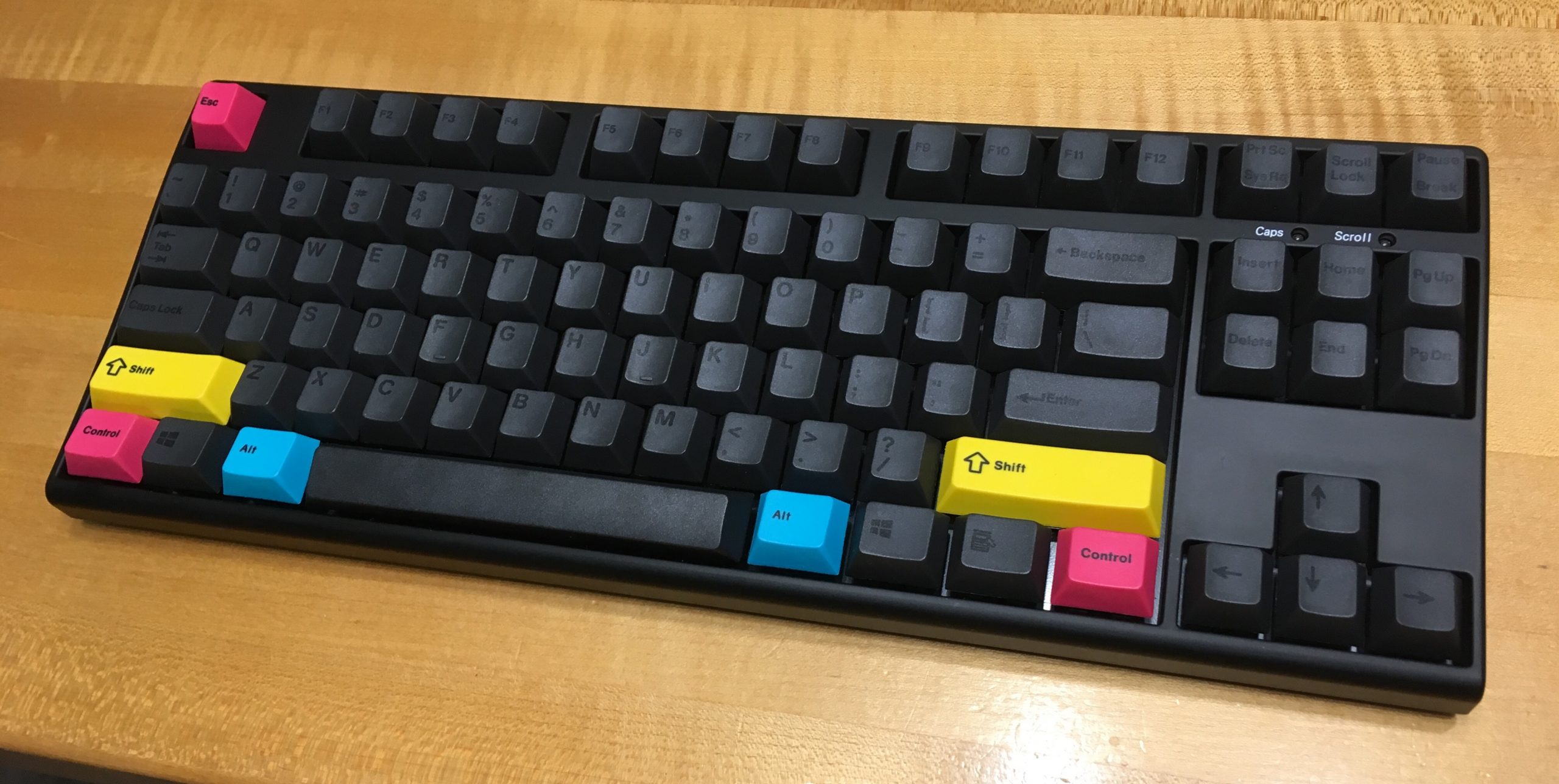
My first (and worst) silent keyboard, a KBParadise V80. This is a generic form-factor TKL; if you’ve heard of Filco’s Majestouch 2, think of this as a discount version. At the time, it was the only ready-to-go silent mech under $200 I could find in stock, and it was… a learning experience. In fact, the pictured configuration is how I learned about good ol’ North-facing interference. It’s also where I discovered that I really don’t like Cherry’s silent switches.
My relentless search for MX-compatible silent switches that didn’t suck (quite the elusive thing at the time) also served to deepen my curiosity about and interest in switches generally. Finding Gazzew and his at-the-time-obscure experiments made me realize there was a lot more to this sphere than I first knew, and it holds my interest to this day. This was around the time I joined KeebTalk and put together my first write-up about switches (complete with goofily-named franken at its center).
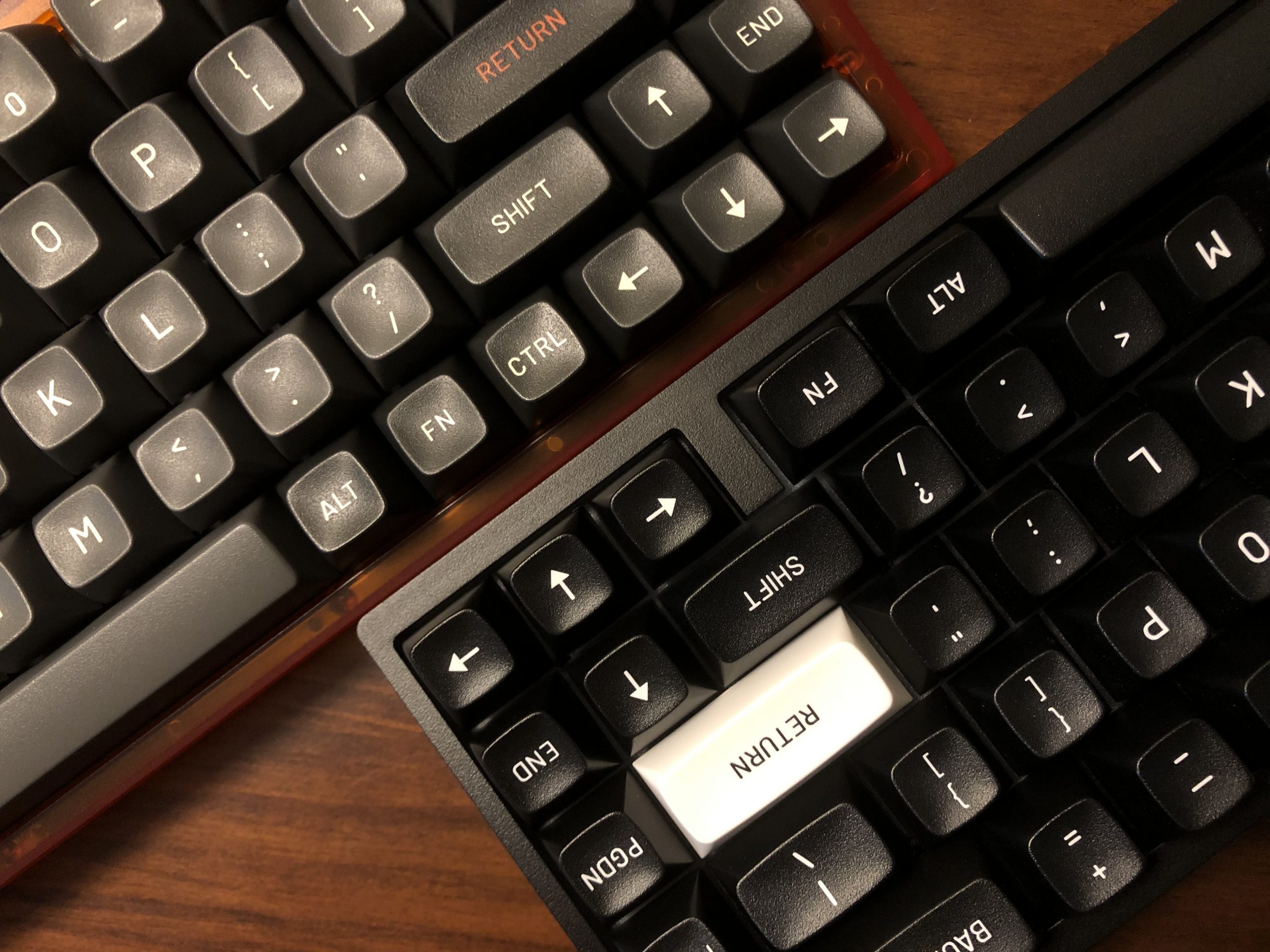
My well-used GK’s successors – well, one of them was, anyway. I like the NK65EE. I love the KBD67L.
At this point I’d started putting another 7 switches in the jars for a total of 68 – after trying my first not too long before, I was all-in on the 65% train with another one or two on the way. I enjoyed the NK65EE, and found a new favorite in the KBD67L – I’m using the latter to write this post, and it’s still my daily standby. This is about the time my focus in the hobby really honed-in on switches specifically – I was already interested in and collecting them, but having some enjoyable hot-swap boards definitely grew my interest in curating a personal switch library.
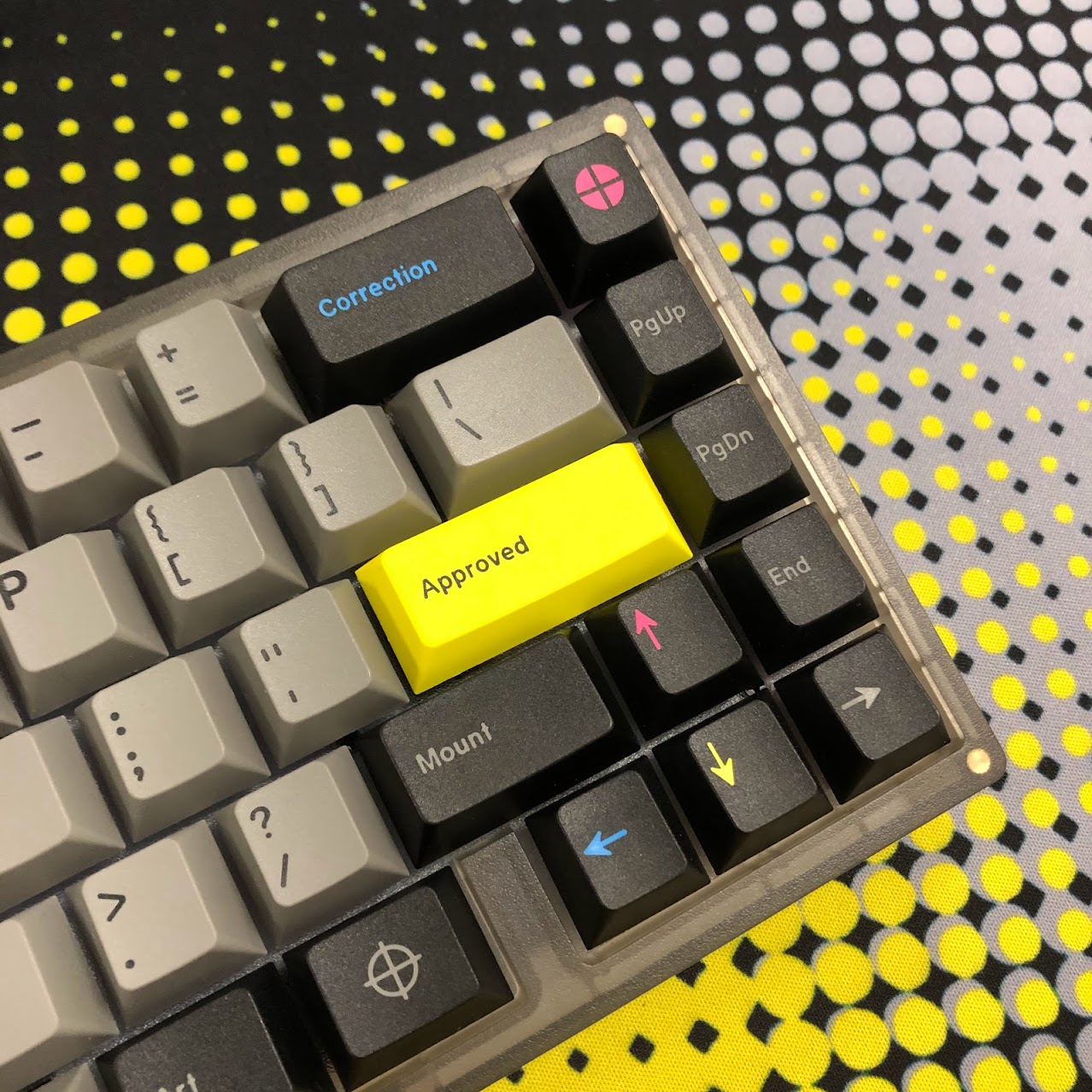
I have a few of these, and this is the one that’s seen more use than any other keyboard I own. I use it every day at work, and I’m using it now – this permutation features the YD67BLE bluetooth PCB and one of my very favorite keysets (named after my day-job), GMK Prepress.
As my collection grew I got really into playing around with frankenswitching – mostly just for fun, but also to see what I could learn through experimentation. I wouldn’t say I stumbled on anything ground-breaking, but I did manage to stumble upon a couple combinations I enjoy to this day, and I definitely learned a lot about switches – especially when I found combinations that didn’t work. While I don’t spend as much time in the Switch Kitchen these days, I’ll still mix-up a few new experiments on the odd Sunday evening to see what I can see.
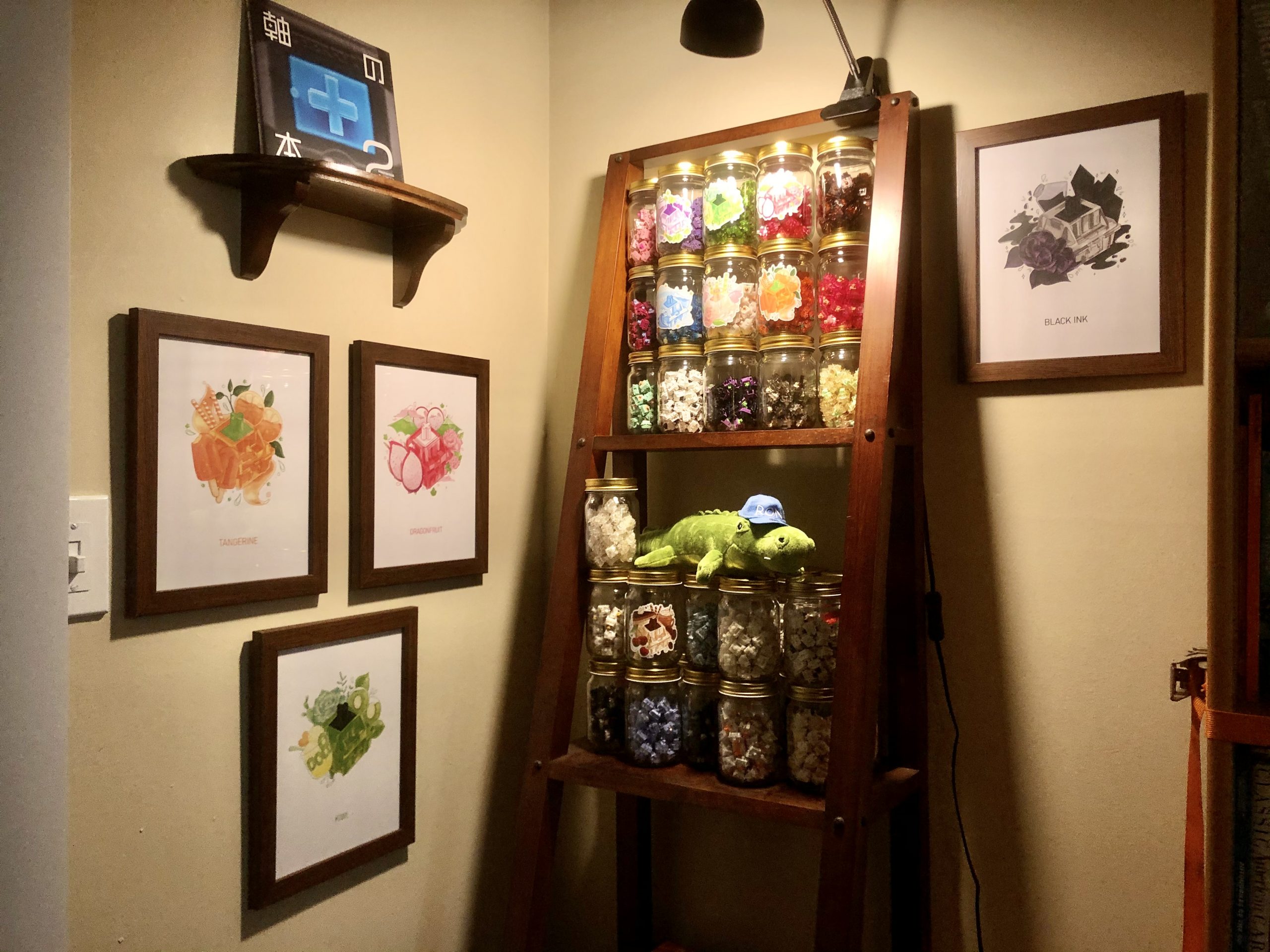
The Switch Corner is born – featuring some framed prints of SeoBun’s illustrations, one of Romly’s switch data books, a Gator Ron plush, and of course – a shelf full of switches.
When I took the above photo, switch selection was exploding, but still wasn’t at the level of copious variety we enjoy now – so it still wasn’t too uncommon to mix some things together and have a switch with aspects not represented in the commercial market. For me, these days frankenswitching is more about learning the nuances of how parts interact than finding a new favorite – with the selection available today, I know there’s a good chance anything I can kit-bash at home probably has a cheaper-to-acquire equivalent somewhere in the market.
I still occasionally find a sound, feel, or performance aspect that I prefer in some mix-matched arrangement – but if I wasn’t having fun doing the mixing, the practice would be pretty deep into the realm of diminishing returns.
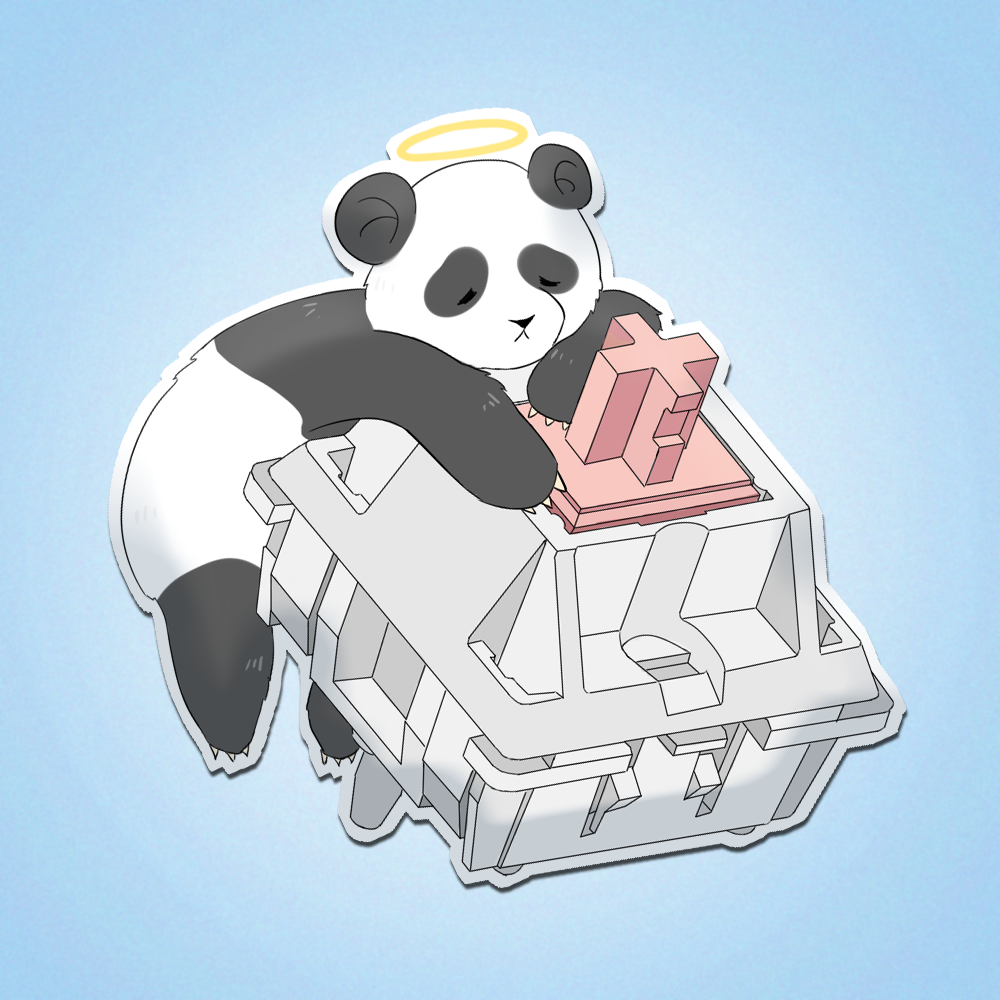
*Oh, you.* Regardless of how one feels about the Holy Panda and all that came in its wake – its impact on the whole MX-compatible universe is undeniable. Illustration by @wintheart and commissioned by Qlavier.
To drive home how frankenswitching has both driven and been largely outmoded by growth in the market, the OG granddaddy of them all, the Ergo Clear, is now available as a factory switch from Cherry. In addition of course, that other wildly popular franken that ignited frankenswitching as a hobby in its own right, the (above pictured) Holy Panda, has had commercial iterations, equivalents, and copies for years now. With more of my focus drifting towards trying new materials and tooling iterations over mixing-up new recipes, I continued to grow the collection ever-larger.
The pandemic thing happened, I moved a couple times, had major spinal surgery, and then moved one more time for good measure. During all of that, the collection was steadily out-growing my little tapered display shelf and increasingly overflowing into a bookshelf – and in either case, most of the collection was obscured. That last move was into a house, and it was then I decided my collection belonged on the wall. Roughly one year later, and my imagined wall-of-switches is now a reality:

The collection as it stands – as of late last night, anyway – I’ve yet to organize them. If you’re curious, these 12 shelves will hold 132 12oz mason jars – each of which can hold up to about 90 switches. Yep – that means there’s around 11,000 switches in this photo.
This brings us to now – we’re at now, now. I stayed up past all reasonability last night – I was on a roll and wasn’t about to stop until they were all up – and it’s finally done! Well – at least for now. I’ve got more jars than will fit on the shelves I have, but that’s most of my collection up there. I haven’t taken the time to sort or organize them yet – I was just way too excited about having the shelves on the wall to not see how they would look full with jars – and I’m way too stoked about that to wait until later to post about it – so here we are!
The Switch Corner lives again, back and bigger than ever – and I don’t think I could be happier about it. I love being able to see my collection at-a-glance, and I think having them on the wall will really facilitate enjoying the collection as a sort of haptic library.

SCIENCE IMMINENT!
It’s not just for me, though! I’m currently developing a cataloging process – and once I’ve got that sorted, I’ll be systematically covering every single switch in my collection one at a time. It’s a project that will keep me busy a good few years, and I think I’ll enjoy having a long-term hobby endeavor like that. I have a grand total of 1 (one) switch videos as of writing so far, and it’s over a year old – but once I’ve got the process dialed there will be lots more switch content coming – so stay tuned!
In the mean-time, it’s back to work for me. This has been Deadeye Dave – thanks so much for stopping by, and have yourselves a good one!

